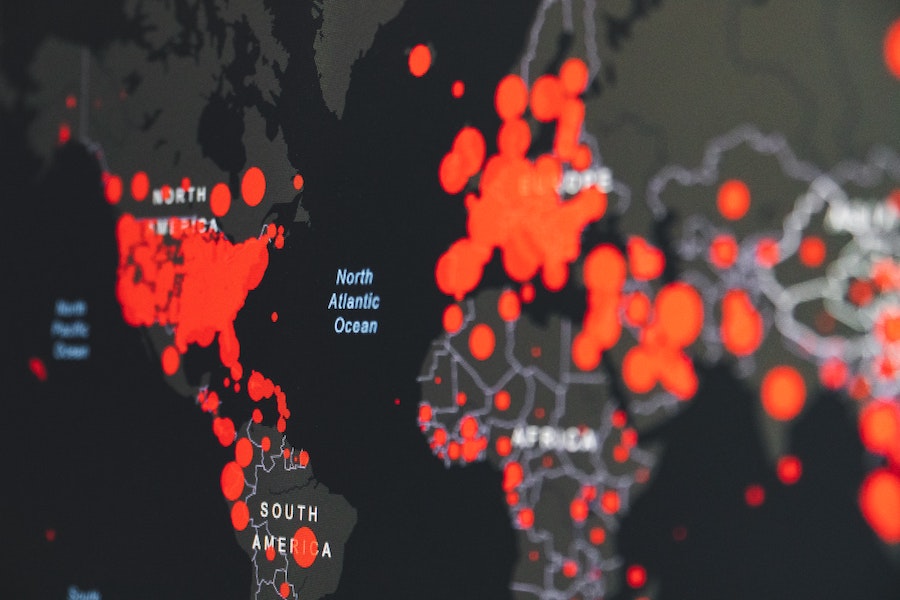Healthcare / Planning and mapping
Simulation tool helps countries plan for COVID-19 countermeasures
By Andrew Sansom | 01 Jun 2020 | 0
Imperial College London has developed coronavirus outbreak simulation tools for 137 countries to help healthcare services plan their response to the pandemic, write the research university’s Stephen Johns and Dr Sabine L van Elsland.
The platform Covidsim.org is a scenario analysis tool that can make projections of the prevalence of infections each day and the expected number of people requiring hospitalisation and critical care facilities.
The analysis tool includes region-specific scenarios for 137 low- and middle-income countries (LMICs). It was developed by Imperial’s MRC Centre for Global Infectious Disease Analysis, Jameel Institute (J-IDEA) with Bio Nano Consulting (BNC, a member of the AquAffirm Group), and it was co-funded by Wellcome and UKAID.
The web-based tool will help inform governments and public health decision makers about intervention and restriction strategies. It is said to enable simulation of the COVID-19 epidemic trajectory and healthcare demand with and without interventions or government restrictions, such as social distancing control instructions and lockdown orders.
Each scenario can be compared to the projected impact of an unmitigated epidemic, says Imperial.
For countries with no intervention yet implemented, the user can input start and end dates for an intervention to explore the effectiveness of reducing transmission.
 For countries where interventions have already been implemented, the user can explore the impact of keeping the interventions in place for different timescales, and of reducing or increasing their effectiveness over this period. Users can also explore potential “exit” strategies, adds Imperial.
For countries where interventions have already been implemented, the user can explore the impact of keeping the interventions in place for different timescales, and of reducing or increasing their effectiveness over this period. Users can also explore potential “exit” strategies, adds Imperial.
“This is a tool for researchers and health professionals to assess interventions for COVID-19,” said Giovanni Charles, senior research software engineer at the MRC Centre for Global Infectious Disease Analysis. “Users can configure healthcare capacities and interventions, and see the projected impact on their population’s health and the demand of their healthcare system. The responsive interface and outputs allow users to consider a variety of scenarios. This tool will support the effort in low- and middle-income countries to plan effective countermeasures to COVID-19.”
Azra Ghani, a professor in infectious disease epidemiology, at the MRC Centre for Global Infectious Disease Analysis, said: “All countries have been challenged by the COVID-19 pandemic, but it’s those living in the lowest-income settings that are likely to be hardest hit. By making these tools available, countries with more limited resources can compare the outputs from epidemiological projections with the wider effects that interventions may have on their population to help design locally appropriate responses that maximise health and wellbeing.”
David Sarphie, CEO of Bio Nano Consulting, said: “This epidemic trajectory simulation tool could help government lockdown exit strategies and de-escalation plans. Our online management tools have been designed to help government healthcare officials, strategic planners, and academic researchers to model, plan, prepare for and manage the COVID-19 global pandemic more effectively.”
Healthcare demand forecasting dashboard for LMICSs
The Imperial team has also created a dashboard for short-term forecasts of healthcare demand for LMICs.
The dashboard is said to provide daily updated country specific reports, including short-term forecasts. This can assist countries to understand where the epidemic is at in terms of estimated number of infections and expected number of deaths for the next 14 days, the number of people requiring critical care, and the impact of changing current policies.
The project is led by the WHO Collaborating Centre for Infectious Disease Modelling, and it was funded jointly by the UK Department for International Development and the Wellcome Trust. 
Dr Oliver J Watson, from the MRC Centre for Global Infectious Disease Analysis, said: “This tool helps countries to understand where they are in their epidemic and how effective their interventions have been to date. The majority of LMICs responded much earlier to the threat of COVID-19 than high-income countries and implemented restrictions of movements and lockdowns earlier in their epidemic. However, we estimate that the majority of LMICs have an R (reproduction rate) near 1. The next few weeks are thus critical for LMICs as they consider relaxing interventions. This tool helps show the short-term effect of relaxing interventions.”
Dr Patrick Walker, from the School of Public Health, said: “We hope this proves a useful tool to help countries understand the next steps ahead in their epidemics. Currently, the tool is estimating highly variable trajectories between countries but does highlight the success many are having in suppressing transmission. Equally, we believe population-level immunity remains very low in every country covered and relaxing measures too rapidly will lead to large waves of transmission, which risk overwhelming health systems for prolonged periods.”
His colleague Charlie Whittaker added: “Lower- and middle-income countries are increasingly being hit by COVID-19 epidemics. While interventions to date have managed to successfully control transmission in many settings, these countries remain acutely vulnerable to resurgence of the virus and potential overwhelming of already strained health systems. We hope this tool will provide policy makers with a better understanding of what the future might hold under different scenarios of COVID-19 spread and enable these countries to plan accordingly.”
Organisations involved


